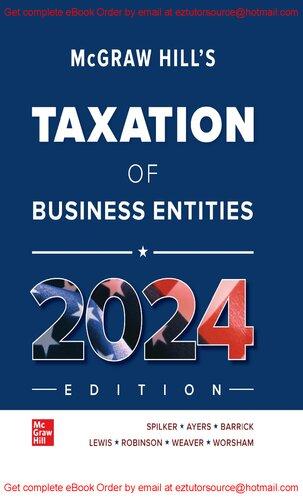66. Suppose that David has elected to account for inventories and has adopted the last-in, first-out (LIFO)
Question:
66. Suppose that David has elected to account for inventories and has adopted the last-in, first-out (LIFO) inventory-flow method for his business inventory of widgets (purchase prices below).
In late December, David sold one widget, and next year David expects to purchase three more widgets at the following estimated prices:
Widget Purchase Date Direct Cost Other Costs Total Cost
#1 August 15 $2,100 $100 $2,200
#2 October 30 2,200 150 2,350
#3 November 10 2,300 100 2,400 Widget Purchase Date Estimated Cost
#4 Early spring $2,600
#5 Summer 2,260
#6 Fall 2,400
a) What cost of goods sold and ending inventory would David record if he elects to use the LIFO method this year?
b) If David sells two more widgets next year, what will be his cost of goods sold and ending inventory next year under the LIFO method?
c) How would you answer
(a) and
(b) if David had initially selected the first-in, first-out (FIFO) method instead of LIFO?
Suppose that David initially adopted the LIFO method but wants to apply for a change to FIFO next year. What would be his §481 adjustment for this change, and in what year(s) would he make the adjustment?
Step by Step Answer:

McGraw Hills Taxation Of Business Entities
ISBN: 9780134420851
2024 Edition
Authors: Brian Spilker, Ayers, Robinson, Outslay, Worsham, Barrick, Weaver






